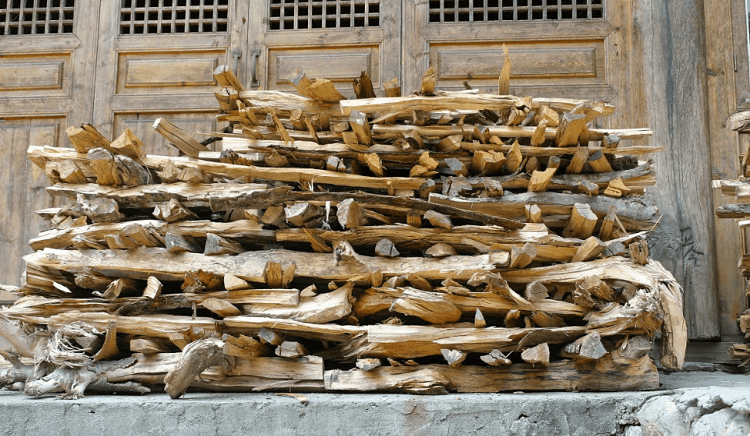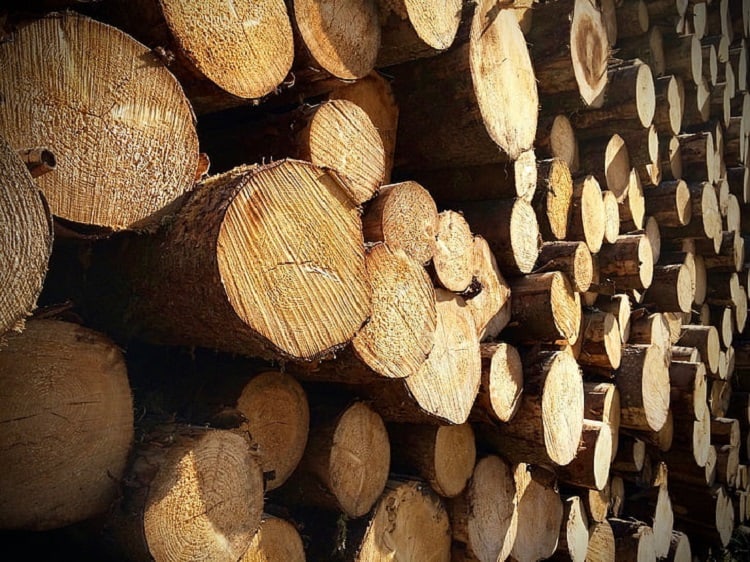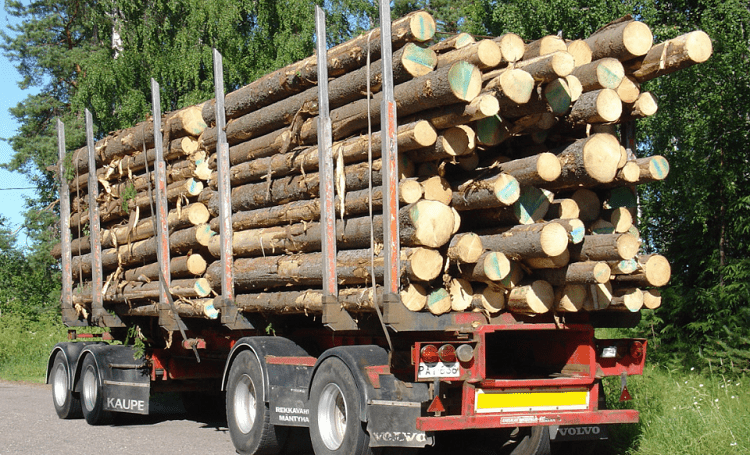When purchasing firewood, you may hear various terms for sizes and stacks of wood. Most people typically buy firewood by the stack and not by weight, as weight can be influenced easily by the moisture content of the wood, the number of pieces, and the type of wood.
There are a few different stack terms that we will take a look at in this article, along with some other things you should consider when dealing with firewood stacks.
Firewood Stacks Come in Various Sizes

“Full Cord” or “Cord”
- 4′ x 4′ x 8′
- 128 cubic feet
- Also known as a ‘Full Cord’
A cord of firewood occupies 128 cubic feet and is the largest standard measurement of wood. When referencing the BTUs of a particular type of wood, it is usually measured by the cord. Most typically stacked four feet wide, four feet high, and eight feet long.
A half cord will usually measure 4′ x 4′ x 4′ and measure a volume of 64 cubic feet.
“Face Cord”
- 4′ x 8′ x 16″ *
- Approximately 42 cubic feet or 1/3 of a cord
- Also known as a ‘Rick Cord’
A face cord, or in some areas, a rick cord, has the same four feet high and eight feet wide dimensions as a full cord, with the length of the wood typically measuring around 16 inches.
*Be wary that some vendors will not use a standard 16-inch measurement for wood length, and therefore a face cord can be almost any size.
A “rick” is not a standard unit of measurement and is a term that varies from location to location and seller to seller.
“Sheldon Cord”
- Varies wildly in size
- Sometimes called a ‘Stove Cord’
A Sheldon cord is a non-standard size firewood stack and can vary in volume with each retailer. That said, it is usually classified as being more than a full cord (128 cubic feet); however, some vendors sell a Sheldon cord as less than a full cord. If you’re buying a Sheldon cord that doesn’t explicitly mention the dimensions of the stack, check with the retailer.
Bundle
- Dimensions vary by retailer
- Typically 0.75 cubic feet
Bundles are small stacks of firewood, usually retailed wrapped in plastic, and available in most home and garden stores and campgrounds. A bundle’s physical dimensions will depend on the retailer but typically measures around 0.75 cubic feet.
Things to Consider When Buying Wood Stacks

Not everything is standardized when purchasing wood, so if you’re trying to be economical and work out the best price, you can consider some of the following points.
Is The Wood Packed Tightly?
How tightly the wood is packed in a stack will influence just how much wood you’re getting. If you can see the wood before you buy it, inspect the stack and see if it matches your expectations.
Some vendors sell their cords pre-split, which not only removes one step you probably don’t want to do yourself but also tends to increase the total volume of wood that will fit in the stack. Feel free to ask if the logs come pre-split.
Rick and Face Cord Wood Length Can Vary In Some Areas
Not all face/rick cords come with a standard 16″ log length. It’s worth checking with your vendor if you aren’t sure.
With that said, a face cord usually comes with a log length of at least 16″. Did you know that a ‘rick’ is actually a stacking method used for wood, hay, or any other stackable material and wasn’t originally intended to be used as a measurement of wood?
How Much Is A ‘Pick-up Truckload’?

The load of a pick-up truck will obviously vary from vehicle to vehicle, but you can make an educated guess. The popular F-250 standard long-bed will stack slightly more than half a cord, including space for the wheel arches, and a full-size 8′ pick-up bed will also stack around half a cord.
You can check with your vendor when you’re willing to buy, but around half a cord or 64 cubic feet is what you should expect to pick up when purchasing ‘a pick-up truckload.’ As above, the ‘truckload’ could refer to a Sheldon cord, another non-standard measurement. It’s always best to check with the supplier if you are unsure.



